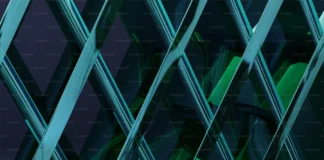Hyperpop, Hyperpop, Hyperpop. The term reverberates through the halls of the music industry, signaling a new wave of genre-bending sounds and electrifying energy. With its explosive fusion of pop, electronic, and experimental elements, Hyperpop has emerged as a boundary-pushing force, captivating listeners and artists alike. In this in-depth exploration, we delve into the multifaceted world of Hyperpop, tracing its origins, examining its key characteristics, and exploring its cultural impact.
Hyperpop, at its core, is a genre that defies categorization. It blends together an eclectic range of musical styles, including but not limited to pop, electronic, hip-hop, and punk. This fusion creates a sound that is simultaneously futuristic and nostalgic, often characterized by its hyperkinetic beats, distorted vocals, and glitchy production techniques. Hyperpop embraces chaos and revels in the collision of disparate sonic elements, resulting in an exhilarating sonic experience that challenges conventional norms.
The roots of Hyperpop can be traced back to the late 2000s and early 2010s, with the rise of online communities and platforms like SoundCloud and Tumblr. Artists such as SOPHIE, A.G. Cook, and Arca began experimenting with electronic music, incorporating elements of bubblegum pop, PC Music, and avant-garde aesthetics. They pushed the boundaries of what was considered mainstream or accessible, embracing a DIY ethos that allowed for greater artistic freedom and experimentation. The term “Hyperpop” itself was coined by musician Hannah Diamond in 2013, further solidifying the emerging movement.
In the past, pop music has often been criticized for its formulaic structure and predictable melodies. Hyperpop disrupts this paradigm, offering a refreshing departure from the norm. Its focus on intense production and maximalist sensibilities pushes the boundaries of what is musically acceptable, dismantling traditional pop structures and conventions. Hyperpop songs often feature rapid tempo changes, pitch-shifting, and hyper-processed vocals that challenge listeners’ expectations. The genre thrives on surprise, with unexpected twists and turns that keep the audience on their toes.
One of the defining characteristics of Hyperpop is its unabashed embrace of digital aesthetics and internet culture. The genre revels in the sonic landscapes and visual aesthetics of the digital realm, blurring the lines between the virtual and the real. The artwork associated with Hyperpop often features glitchy visuals, pixelated graphics, and neon colors, evoking a sense of hyperreality and hyperconnectivity. It’s a reflection of our increasingly digitized world, where virtual spaces and social media platforms shape our experiences and perceptions.
The production techniques employed in Hyperpop are equally distinctive. Artists utilize a wide range of tools, including software synthesizers, vocal manipulation plugins, and audio effects, to create a unique sonic palette. The use of autotune and vocal processing is particularly prevalent, distorting and warping the human voice into something otherworldly. This deliberate manipulation of vocals challenges conventional notions of authenticity and showcases the genre’s commitment to pushing boundaries.
Collaboration and community are also key pillars of Hyperpop. Artists within the genre often collaborate with each other, forming collectives and creative networks that amplify their individual voices. Collectives like PC Music, 100 gecs, and Dog Show Records have become synonymous with Hyperpop, fostering a sense of camaraderie and shared vision. This collaborative spirit extends beyond the music itself, with artists and fans engaging in online communities, sharing memes, and participating in a vibrant discourse surrounding the genre.
The cultural impact of Hyperpop cannot be understated. It has redefined the possibilities of pop music, challenging traditional notions of genre and pushing the boundaries of what is considered mainstream. Hyperpop artists have gained significant recognition and influence in recent years, with their music reaching a wider audience and garnering critical acclaim. The genre has inspired a new wave of artists who are unafraid to experiment and challenge established norms.
Hyperpop’s influence extends beyond the music industry. Its embrace of digital aesthetics and internet culture reflects the shifting cultural landscape of the 21st century. It captures the essence of a generation that is deeply interconnected through technology, where virtual spaces and online communities hold significant sway. Hyperpop provides a soundtrack to this digital realm, channeling the energy, chaos, and constant flux of the online world into its music.
The rise of Hyperpop has also sparked discussions about the nature of authenticity in music. With its heavily processed vocals and unconventional production techniques, some critics argue that Hyperpop sacrifices authenticity in favor of experimentation. However, proponents of the genre argue that authenticity lies not in conforming to preconceived notions of what is “real,” but in the genuine expression of artists’ identities and experiences. Hyperpop artists use technology as a tool for self-expression, creating a new form of authenticity that resonates with a generation shaped by the digital age.
Hyperpop has also challenged traditional power structures within the music industry. Its DIY ethos and reliance on online platforms have allowed artists to bypass traditional gatekeepers and connect directly with their audience. This democratization of the music-making process has opened doors for marginalized voices and underrepresented communities, providing a platform for artists who might not have had access to traditional avenues of exposure. As a result, Hyperpop has become a space where diverse voices and identities can flourish.
The genre’s impact can be felt in mainstream pop music as well. Elements of Hyperpop have seeped into the work of more established artists, blurring the boundaries between underground experimentation and mainstream success. Collaborations between Hyperpop artists and mainstream pop stars have become more common, signaling a growing acceptance and recognition of the genre’s influence. This crossover has further propelled Hyperpop into the cultural zeitgeist, introducing its sound to an even wider audience.
While Hyperpop has gained considerable traction and recognition, it remains a genre that is constantly evolving and defying expectations. Its very nature is rooted in experimentation and pushing boundaries, which means that its sonic landscape is always in flux. Artists within the genre continue to challenge and redefine what Hyperpop can be, ensuring its continued relevance and impact.
In conclusion, Hyperpop is a genre that defies categorization and pushes the boundaries of what is considered pop music. Its fusion of electronic, pop, and experimental elements creates a sound that is both futuristic and nostalgic, challenging conventional norms and structures. Hyperpop embraces chaos, digital aesthetics, and internet culture, reflecting the shifting cultural landscape of the 21st century. It fosters collaboration and community, empowering marginalized voices and challenging traditional power structures within the music industry. With its influence permeating mainstream pop music and its commitment to constant experimentation, Hyperpop is a genre that continues to captivate listeners and shape the future of music. Hyperpop, Hyperpop, Hyperpop.














